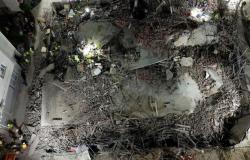The tragic story of Asunta Basterra Portoa girl murdered in 2013 by her own adoptive parents in Galicia, Spain, has once again captured public attention through a new documentary series that will premiere this Friday on Netflix . The intention of the series has been to explore a case, which remains one of the most disconcerting, discussed and mysterious in the recent criminal history of Spain.
We are transported to 2001, when Asunta Yong Fangoriginally from China, was adopted by Rosario Porto Ortega and Alfonso Basterra Camporro when he was one year old. Rocio Porto She was a renowned lawyer who worked as a French consul until 2006, and Alfonso Basterraeconomic journalist in local media.
Asunta’s life seemed to be that of a normal girl growing up in a privileged environment, excelling in activities such as dancing and piano and showing contagious joy. However, behind the façade of normality, she hid a much darker reality. On September 21, 2013, Asunta was murdered.
Subsequent investigation revealed that had been drugged with lorazepam —a medication for anxiety or depression disorders—, and suffocated by her parents in a family summer house in Montouto. The girl’s body was found on the side of a forest road, tied up and in a fetal position, with no signs of sexual or physical assault.
What was the reason why Asunta was murdered?
The biggest question in the case remains unresolved. Although we know that the Asunta case is complex, with several layers of toxic family relationshipsmental health problemsthere was never a fair explanation and not even one that could satisfy the curiosity of the Spanish.
Many theories are being considered about the possible reasons, but the most discussed, without a doubt, is the one that refers to financial reasons. An inheritance from Rosario’s parents that could have remained in the hands of Asunta. His parents were sentenced to 18 years in prison each.and the trial revealed that it had been a premeditated murder.
The case revolved around a series of clues. For example, the ropes with which they had tied Asunta’s body, identical to those found on Rosario’s property; the presence of lorazepam, found in toxic amounts in the girl’s blood; the disappearance and appearance of the father’s laptop and second mobile phone, artifacts that were placed in her apartment after having manipulated her hard drive.
a dysfunctional family
On January 6, 2013, Alfonso discovered that Rocío was unfaithful to him, so they made the decision to separate on January 8 and formalize the divorce in mid-February; They both reached a balanced agreement for the well-being of her daughter and her individual needs: Alfonso took care of Rocío—because she had lupus erythematosus and depression—, and Asunta and she helped financially to support the home.
In the summer of 2013, Rocío was admitted to the hospital due to health complications and worsening lupus. This put the woman in a critical situation in which she needed Alfonso and therefore she made promises to return to him.
Other mysteries in the investigation
In addition to the gruesome details of the murder, the case was complicated by a series of forensic errors. A month after Asunta’s death, traces of semen were found on his shirt. Initially, it was thought that this could point to another perpetrator, but it was later determined that It was due to contamination in the laboratorywhich only added more questions to the already enigmatic case.
Furthermore, in early July 2013, Rosario Porto claimed to have discovered a short, robust man trying to strangle Asunta in her home. This mysterious “man in black” He pushed Rosario and hurriedly fled the scene. This incident only added more mystery and suspicion to the already tragic situation.
A few days after the event, Asunta, visibly affected and having difficulty staying alert, revealed to the director of her music school that her mother forced her to take some white powder unpleasant taste that left her drowsy for hours.
Alfonso Basterra has been in prison since 2013, serving his sentence in Teixeiro prisonwith a planned release date of 2031. Earlier this year, Basterra applied for the third degree, but was rejected due to a lack of signs of repentance.
On the other hand, Rosario Porto died in 2020 in Brieva prison after a third suicide attempt. During his time in prison, he remembered her daughter every September 22 with an advertisement in several newspapers, a tribute that read: “Asunta Yong Fang in memoriam, I will always love you, Mom.”
The Netflix series not only reopens the case for viewers, but also raises important questions about shortcomings in child protection systems. Through detailed interviews and reconstructions, we explore how a tragedy of this magnitude could have been avoided and what signs were ignored along the way.






